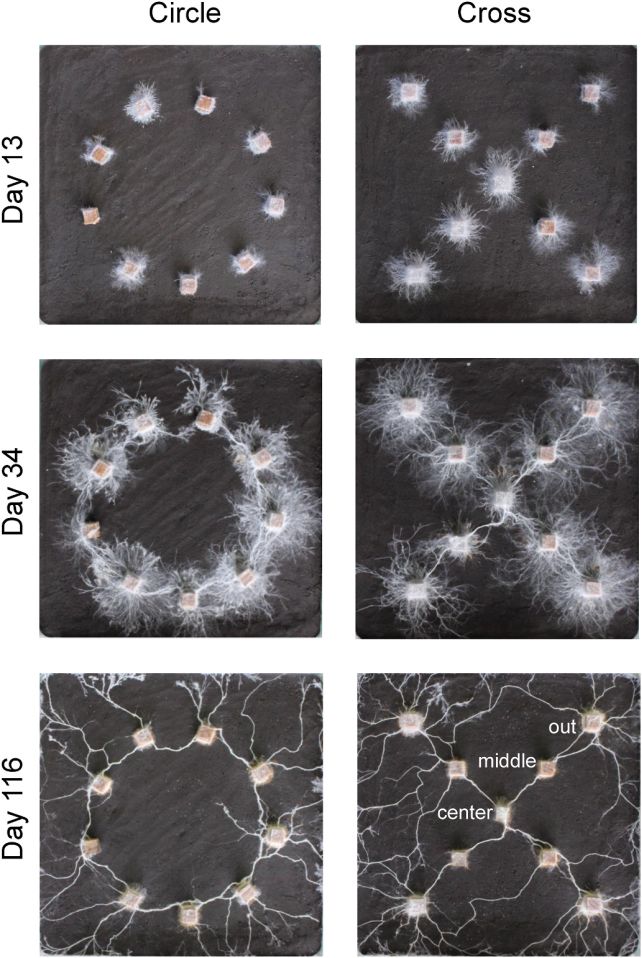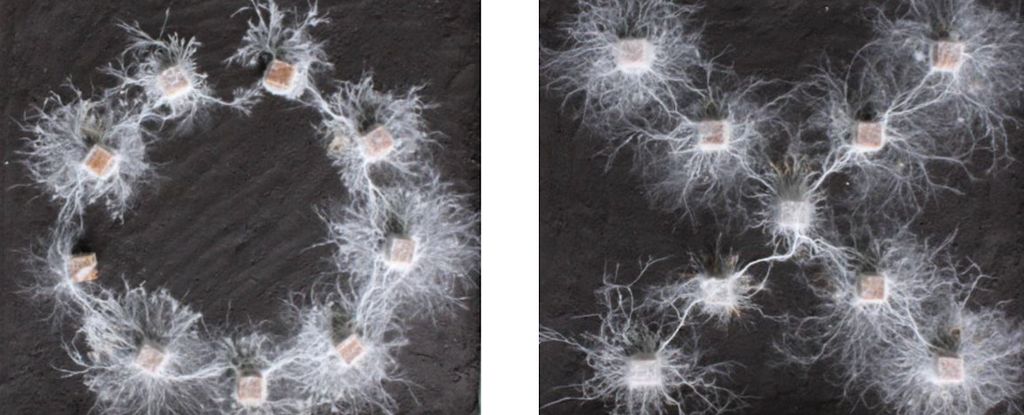A new study has found that a fungus called Phanerochaete velutina is able to distinguish between different spatial arrangements of resources and adjust its behavior accordingly. Researchers placed blocks of wood colonized with the fungus in either a circular or cross-shaped arrangement.
 Over time, the fungus’ mycelium spread out differently depending on the layout. In the circle, tendrils only extended outwards, leaving the center empty. In the cross, the blocks at the tips of the cross developed the most connections as those provided the best positions to explore from. This suggests the fungus can perceive and recognize differences in its surroundings and communicate across its network to optimally distribute itself, which the researchers say demonstrates a primitive form of cognition. The findings add to evidence that fungi may have capabilities like memory, learning, and decision making, and could provide insights into studying intelligence in brainless organisms.
Over time, the fungus’ mycelium spread out differently depending on the layout. In the circle, tendrils only extended outwards, leaving the center empty. In the cross, the blocks at the tips of the cross developed the most connections as those provided the best positions to explore from. This suggests the fungus can perceive and recognize differences in its surroundings and communicate across its network to optimally distribute itself, which the researchers say demonstrates a primitive form of cognition. The findings add to evidence that fungi may have capabilities like memory, learning, and decision making, and could provide insights into studying intelligence in brainless organisms.
Source: Science Alert









